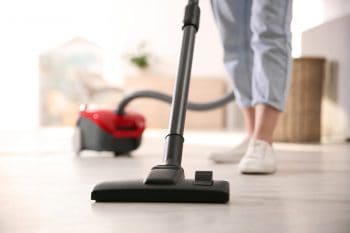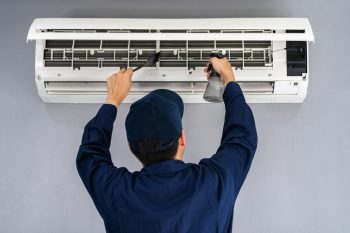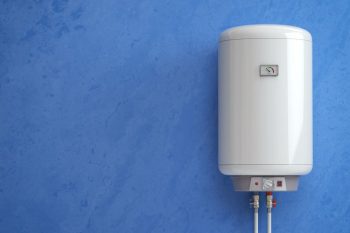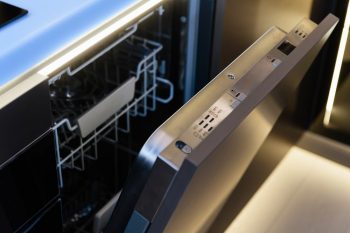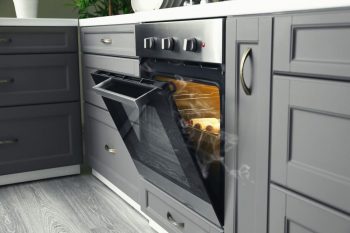
Rust in an oven can be a real nuisance. Not only does it mar the appearance of your oven, but it can also pose health and safety risks. Luckily, removing rust from your oven is something you can do yourself using a few simple household items and a little elbow grease. This comprehensive guide will walk you through various methods to remove rust from your oven and provide tips on how to prevent rust from forming in the future.
To remove rust from an oven, start by removing any rusted parts like oven racks. Prepare a rust-removing solution of white vinegar or a paste of baking soda and water. Apply this solution to the rusted areas and scrub with a scouring pad, steel wool, or a wire brush. Once the rust is removed, rinse and dry the oven and its parts thoroughly to prevent new rust from forming. If the rust has caused damage, you can sand the area and apply appliance paint for protection.
Recognizing the Signs of Rust in an Oven
The initial signs of rust in an oven include brownish, splotchy stains or small spots on the oven’s interior surfaces, particularly on metal parts. Rust forms when a metallic surface comes into contact with air and moisture, causing the exposed metal surface to oxidize and produce a layer of rust. Addressing rust promptly is essential for several reasons, including health hazards, potential damage to the oven, fire risks, and aesthetic issues.
Primary Causes of Rust in Ovens
The main causes of rust in ovens include moisture, improper cleaning, scrubbing the surface with harsh tools, using harsh cleaning chemicals, damage caused by dents, and high humidity. By understanding these causes, you can take steps to prevent rust from forming in your oven.
Materials and Tools Required for Rust Removal
To effectively remove rust from an oven, you’ll need items like white vinegar or cleaning vinegar, baking soda, steel wool or a stainless steel scrubber, a bowl or container for soaking small items, and a scouring pad or metal brush.
Step-by-Step Rust Removal Process
- Remove the oven racks: Start by taking out the oven racks and any other removable parts that have rust on them.
- Prepare a rust-removing solution: Use white vinegar or a paste made from baking soda and water.
- Apply the solution: Brush the vinegar onto the rusted areas, or rub the baking soda paste onto the rusted parts.
- Scrub the rust: Use a scouring pad, steel wool, or a wire brush to scrub the rust away.
- Rinse and dry: Once the rust is removed, rinse the oven and its parts with water. Dry the oven and its parts thoroughly to prevent new rust from forming.
- Sand the area (optional): If the rust has caused damage to the oven’s surface, you can use emery paper to sand down the area.
- Apply appliance paint (optional): If you sanded the area, you can apply appliance paint to protect it from future rust.
- Reassemble the oven: Put the oven racks and any other removable parts back into the oven.
Safety Measures While Removing Rust
Safety should be your top priority when removing rust from an oven. Always wear appropriate safety gear, work in a well-ventilated area, follow product instructions, use non-toxic and non-corrosive products, test the rust removal product on a small area first, and monitor the rust removal process.
Common Mistakes to Avoid When Removing Rust
Avoid using harsh chemicals, not thoroughly cleaning and drying the metal surface, scrubbing too hard, inadequate rust removal, leaving drip spots, and not using the right rust removal method.
Preventing Future Rust Formation
To prevent rust from forming in an oven, keep the oven clean and dry, ventilate the oven after use, use moisture catchers, maintain oven racks, protect stainless steel surfaces, and store baking pans properly.
When to Consider Professional Rust Removal Services
Professional rust removal services are available and should be considered when rust has started to affect the structural integrity of your property or vehicle, causing safety concerns, or when you lack the expertise or equipment to remove rust effectively.
By following this guide, you can effectively remove rust from your oven and prevent it from forming in the future, ensuring the longevity and efficiency of your oven.
Frequently Asked Questions
Can I use any type of vinegar to remove rust?
Yes, you can use any type of vinegar to remove rust. However, cleaning vinegar or white vinegar is most commonly used due to its higher acidity, which helps in rust removal.
How often should I check my oven for signs of rust?
It’s a good practice to check your oven for signs of rust every few months or whenever you carry out a thorough cleaning. However, if you live in an area with high humidity, you may want to check more frequently.
Is rust in the oven dangerous?
Yes, rust in the oven can be dangerous. It can lead to health hazards if ingested with food, pose a fire risk, and potentially damage your oven over time.
Can I use a common household cleaner to remove rust?
Common household cleaners might not be effective in removing rust. It’s usually better to use a rust-removing solution like white vinegar or a paste made from baking soda and water.
What type of paint should I use if I need to touch up the oven after removing rust?
If you need to touch up your oven after removing rust, it’s best to use an appliance paint that’s specifically designed for high-heat appliances like ovens.
Can I prevent rust from forming in my oven entirely?
While it may not be possible to prevent rust entirely, you can greatly reduce the likelihood of rust forming by keeping your oven clean and dry, ventilating it after use, and taking care of oven racks and other metal parts.
What should I do if the rust has penetrated deep into the oven’s metal?
If the rust has penetrated deep into the oven’s metal, it might be time to consider professional rust removal services. They have the expertise and equipment to handle more severe rust issues.


